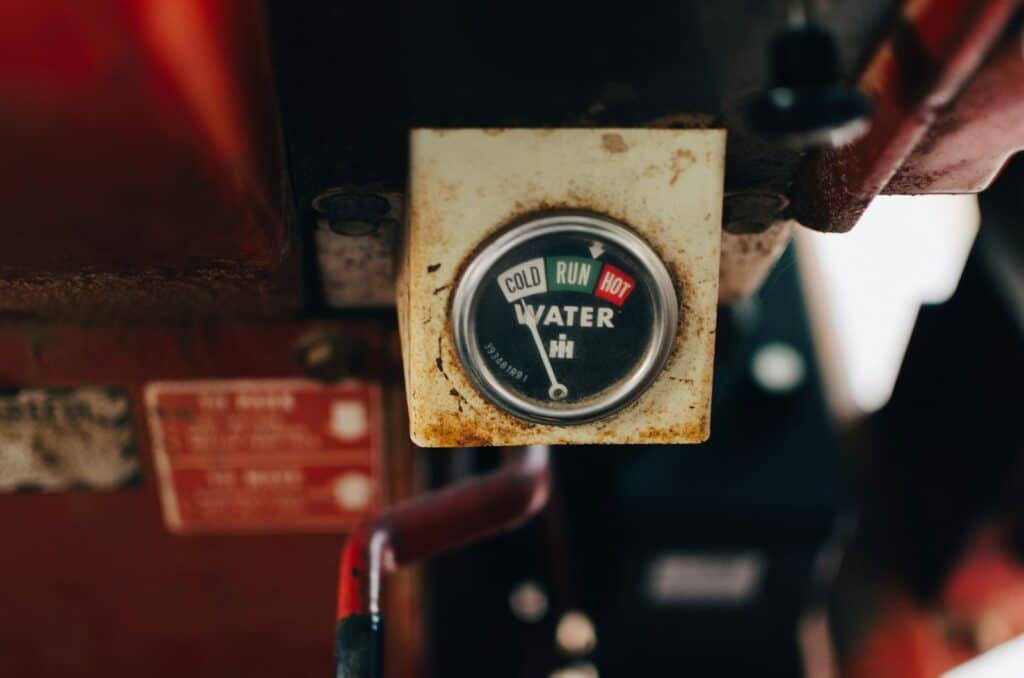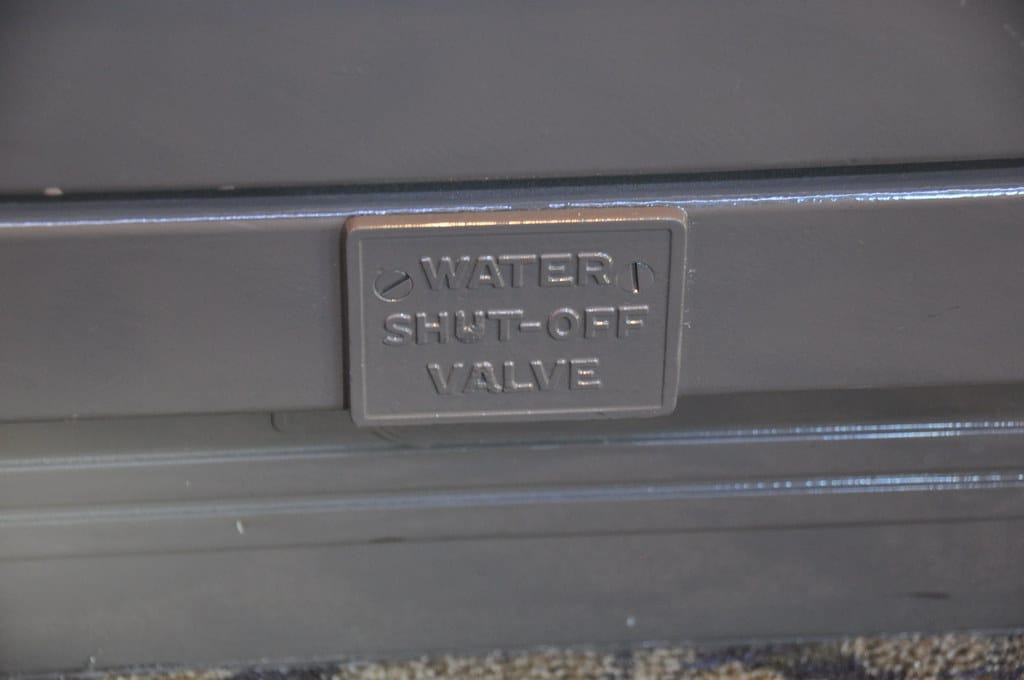Every homeowner should know where their main water shut off valve is located and how to operate it. This critical piece of plumbing infrastructure can save you thousands of dollars in water damage and give you peace of mind during emergencies. Whether you’re dealing with a burst pipe, planning major plumbing repairs, or simply want to be prepared, understanding your home’s main water shutoff valve is essential knowledge that every property owner needs.
The main water shut off valve controls the entire water supply entering your home from the municipal water system. When closed, it stops all water flow to your house, including your water heater, toilets, sinks, and appliances. Knowing its location and proper operation can mean the difference between a minor inconvenience and a major water damage disaster.

Photo by Oscar Ovalle on Pexels
What Is a Main Water Shut Off Valve?
The main water shutoff valve is the primary control point where municipal water supply enters your property. This valve regulates water flow from the water main in the street to all the plumbing fixtures throughout your house. Most homes have two main shutoff valves: one controlled by the water company (usually located near the water meter at street side) and one controlled by the homeowner (typically located where the main water line enters the house).
The homeowner-controlled main valve is what you’ll use during emergencies or when performing plumbing repairs. This valve completely stops water flow to your entire plumbing system, including your hot water tank, pressure tank (if you have well water), and all fixtures connected to your water pipes.
Understanding the difference between your main shutoff valve and individual fixture shutoff valves is important. While each toilet, sink, and appliance may have its own shut off valve, the main water valve controls everything at once. During a major leak or plumbing emergency, you’ll want to turn off the main valve first, then address the specific problem area.

Photo by Kelly Sikkema on Unsplash
Common Types of Main Water Shutoff Valves
Ball Valve
The ball valve is the most common type of main water shutoff valve in modern homes. It features a lever handle that turns 90 degrees to open or close the valve. When the handle is parallel to the supply pipe, the valve is open and water flows freely. When you turn the handle perpendicular to the pipe, the valve closes and stops all water flow.
Ball valves are reliable, easy to operate, and provide a tight seal when closed. They’re designed to be turned quickly in emergencies and don’t require multiple rotations like other valve types. Most plumbers prefer installing ball valves for main water applications because they’re less likely to fail and can be operated even after extended periods of non-use.
Gate Valve
Gate valves are older-style shutoff valves that require multiple clockwise turns to close completely. These valves have a wheel-shaped handle that you turn to raise or lower an internal gate mechanism. To shut off water flow, you turn the valve clockwise until it stops turning. To restore water flow, you turn the valve counterclockwise.
While gate valves were common in older homes, they’re less reliable than ball valves. The internal components can corrode or stick, making them difficult to operate during emergencies. If your home has an old gate valve as the main shutoff, consider having a plumber replace it with a modern ball valve.
Globe Valve
Globe valves are less common for main water applications but may be found in some homes. They operate similarly to gate valves, requiring clockwise rotation to close, but they use a different internal mechanism. Globe valves provide good flow control but create more pressure drop than ball valves.
Where to Find Your Main Water Shut Off Valve
Inside Your Home
In most homes, the main water shutoff valve is located where the main water supply enters the house. This is typically in the basement, crawl space, or utility room. Look for the main water line coming through the foundation wall or floor. The shutoff valve should be located close to where this supply pipe enters your home.
Common indoor locations include:
- Basement near the water meter or pressure tank
- Utility room or mechanical room
- Crawl space accessible through an access panel
- Garage (in homes without basements)
- Near the water heater (though this may be a secondary valve)
The valve is usually installed within a few feet of where the water line enters the house. If you have a water meter inside your home, the main shutoff valve is typically located on the house side of the meter.
Outside Your Home
Some homes have the main shutoff valve located outside the house. This is more common in warmer climates where freezing isn’t a concern. Look for the valve near where the main water line connects to your home’s plumbing system.
Outdoor main shutoff valves may be:
- Near the foundation wall where the water line enters
- In a valve box or utility pit at ground level
- Close to the water meter (but on the house side)
- Protected by a small cover or access panel
At the Water Meter
Every property has a shutoff valve at the water meter, typically located near the street or at the property edge. However, this valve usually belongs to the water company and may require a special wrench to operate. This valve should only be used in extreme emergencies when you cannot locate or operate your home’s main shutoff valve.
The water meter shutoff valve is typically found:
- In a covered pit or box near the street
- At the property line between your house and the municipal water main
- Near other utility connections (gas, electric)
How to Turn Off Your Main Water Shut Off Valve
Ball Valve Operation
Operating a ball valve is straightforward. Locate the lever handle and turn it 90 degrees clockwise until it’s perpendicular to the supply pipe. The valve should turn easily with moderate hand pressure. If the valve is difficult to turn, don’t force it – contact a plumber to avoid damaging the valve.
To restore water flow, turn the lever counterclockwise 90 degrees until it’s parallel to the pipe again. Always turn ball valves slowly and steadily to avoid water hammer, which can damage your plumbing system.
Gate Valve Operation
For gate valves, turn the wheel-shaped handle clockwise to close the valve. Gate valves require multiple full rotations – typically 5-10 turns depending on the valve size. Turn until the handle stops moving and you feel firm resistance. Don’t overtighten, as this can damage the valve mechanism.
To reopen a gate valve, turn the handle counterclockwise the same number of rotations you used to close it. Open the valve slowly to allow air to escape from the water pipes gradually.
What to Do After Shutting Off Water
After closing the main shutoff valve, open faucets throughout your house to drain remaining water from the pipes. Start with faucets on the highest floor and work your way down. This prevents air locks and makes it easier to restore normal water flow later.
Don’t forget about your water heater – it will continue to heat the remaining water in the tank even when the main supply is shut off. Consider turning off the water heater’s power or gas supply if the water will be off for an extended period.
When to Use Your Main Water Shutoff Valve
Emergency Situations
The most critical time to use your main water shutoff valve is during plumbing emergencies. If you discover a burst pipe, major leak, or any situation where water is flowing uncontrolled, immediately shut off the main valve to minimize damage.
Common emergency situations include:
- Burst water pipes due to freezing
- Major leaks in walls or ceilings
- Toilet or appliance flooding
- Damaged water line from construction or accidents
Planned Plumbing Repairs
Any major plumbing work requiring access to the main water line will require shutting off the main valve. This includes:
- Water heater replacement or repair
- Main line repairs or modifications
- Installing new plumbing fixtures
- Pressure tank maintenance (for well water systems)
Extended Absences
If you’ll be away from your home for an extended period, especially during cold weather, consider shutting off the main water supply. This prevents potential freeze damage and eliminates the risk of undetected leaks while you’re away.
When shutting off water for extended periods, also drain your pipes by opening faucets and consider shutting off your water heater to prevent damage from overheating.
Property Inspections
During a property inspection report process, inspectors may need access to plumbing systems. Knowing your main shutoff valve location demonstrates proper home maintenance knowledge to potential buyers and can be important information to include in property documentation.
Maintenance and Troubleshooting
Regular Testing
Test your main water shutoff valve at least twice a year to ensure it operates properly. Turn the valve off and on to prevent the mechanism from seizing due to mineral deposits or corrosion. This simple maintenance can prevent valve failure during actual emergencies.
If the valve becomes difficult to operate or doesn’t completely stop water flow, contact a qualified plumber for inspection and possible replacement.
Signs Your Valve Needs Replacement
Several indicators suggest your main shutoff valve may need replacement:
- Valve won’t turn or requires excessive force
- Water continues flowing when valve is closed
- Visible corrosion or damage to the valve body
- Water leaks around the valve stem
- Valve handle breaks or strips
Cold Weather Considerations
In climates where temperature drops below freezing, protect your main shutoff valve from freeze damage. Valves located in unheated areas like crawl spaces or near exterior walls may need insulation or heat tape protection.
If your main shutoff valve freezes, never use open flames to thaw it. Instead, use a hair dryer, space heater, or call a plumber. A frozen valve can burst and cause significant damage.

Professional Installation and Replacement With G.A. Eberly Plumbing & Heating
When to Call a Plumber
While homeowners can operate their main shutoff valve, installation and replacement should be left to licensed professionals. Plumbing work involving the main water line requires specific knowledge of local codes, proper materials, and specialized tools.
Call a professional plumber like G.A. Eberly Plumbing & Heating when:
- Your main valve needs replacement
- You can’t locate your main shutoff valve
- The valve doesn’t completely stop water flow
- You’re planning major plumbing renovations
- Local codes require professional installation
Installation Requirements
Proper main shutoff valve installation involves more than just connecting pipes. Professional plumbers ensure:
- Compliance with local plumbing codes
- Proper valve sizing for your water supply
- Correct pipe materials and fittings
- Adequate access for future maintenance
- Protection from freezing and damage
Frequently Asked Questions
How often should I test my main water shutoff valve?
Test your main shutoff valve twice yearly to ensure proper operation. Regular testing prevents the valve from seizing and ensures it will work during emergencies.
What if my main shutoff valve won’t completely stop water flow?
If water continues flowing when the valve is closed, the valve likely needs repair or replacement. Contact a licensed plumber to diagnose and fix the issue.
Can I install a main shutoff valve myself?
Main shutoff valve installation typically requires professional expertise and may be regulated by local codes. Most jurisdictions require licensed plumbers to perform this work.
Where should I keep a valve wrench for my water meter shutoff?
Store a water meter valve wrench in an easily accessible location like your garage or utility room. Only use the meter shutoff valve in extreme emergencies when your home’s main valve isn’t accessible.
What’s the difference between my main shutoff valve and individual fixture valves?
Individual fixture valves control water to specific appliances or fixtures, while the main shutoff valve controls all water entering your home. Use fixture valves for localized repairs and the main valve for whole-house shutoffs.
Helpful Resources and Links for Main Water Shut Off Valves
Here are a few valuable resources to help you better understand, locate, and operate your main water shut off valve:
American Red Cross – Water Shut Off Tips
Learn basic safety measures for shutting off your home’s water supply during an emergency.
Home Depot – Guide to Finding the Main Water Shut Off Valve
A step-by-step guide to locate and operate your main water valve with helpful visuals.
Angi – Identifying Your Main Water Shut Off Valve
A comprehensive resource to help homeowners spot and label their shut off valve quickly.
National Technical Institute – 10 Key Safety Practices for Plumbing Professionals
Explore industry tips on water safety and shutoff valve maintenance from accredited plumbing professionals.
This Old House – How to Protect Your Home from Water Damage
Advice on preventing water damage with proactive measures, including maintaining your main water shutoff valve.
Family Handyman – Shut Off Valves Explained
A practical guide covering different types of shutoff valves and their functionalities.
These resources offer a mix of expert guidance, visual tutorials, and actionable advice to ensure you are well-prepared for any water-related emergencies.

Photo by Pablo Zuchero on Unsplash
Protect Your Home with Proper Valve Knowledge
Understanding your main water shut off valve location and operation is fundamental homeowner knowledge that can save you from costly water damage. Regular testing, proper maintenance, and knowing when to call professionals ensures your home’s plumbing protection system works when you need it most.
Take time this weekend to locate your main shutoff valve, test its operation, and ensure all family members know where it’s located. Consider labeling the valve for easy identification during emergencies. If you discover any issues with your valve’s operation or can’t locate it, don’t wait for an emergency – contact a qualified plumber today.
Remember that prevention is always less expensive than water damage repair. A properly functioning main water shutoff valve is your first line of defense against plumbing disasters and an essential component of responsible homeownership.


